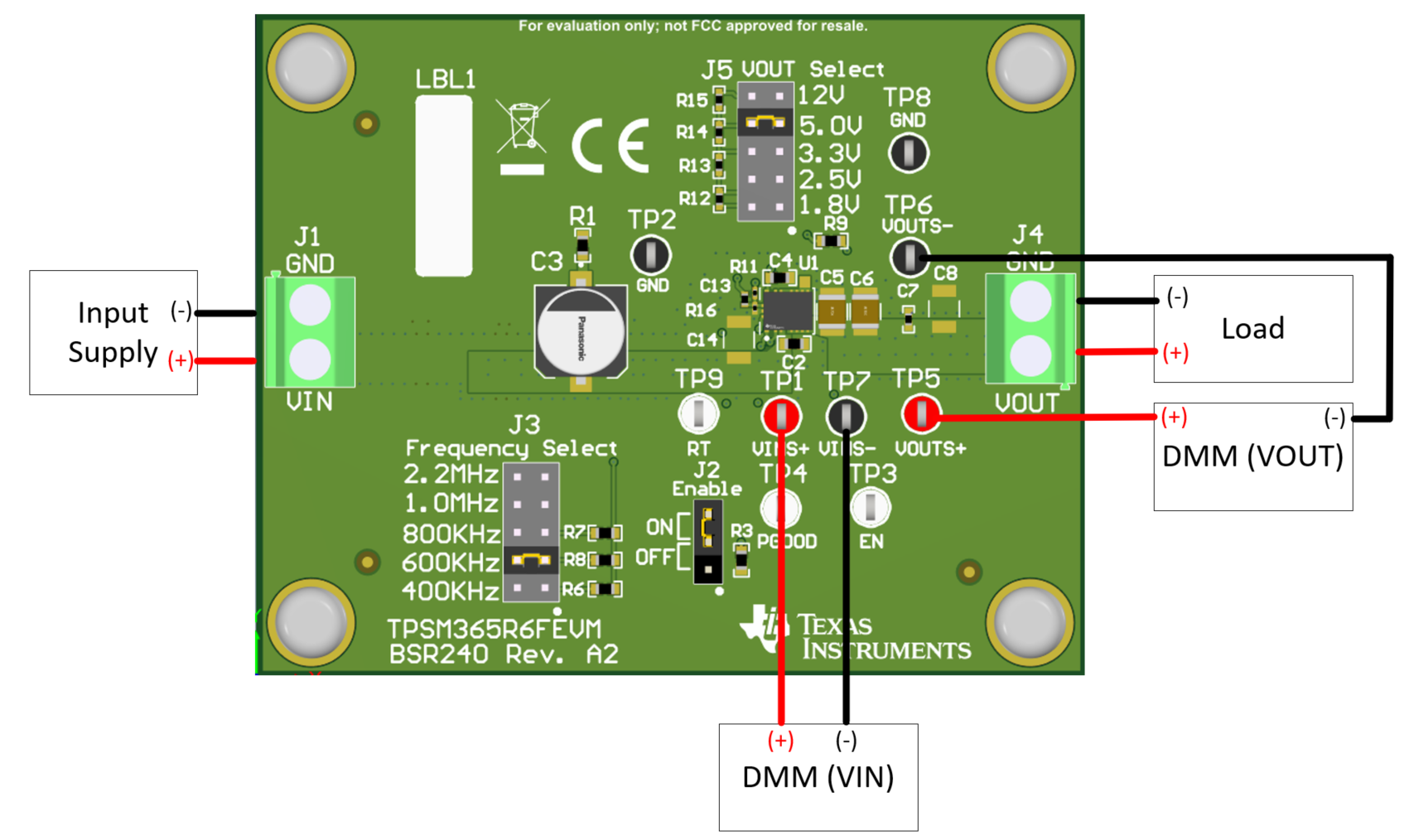SNVU834 September 2022 TPSM365R6
1.1 Test Points
The test points on the top of the board can be used for connecting to the input and output of the EVM. Table 1-1 describes each test point.
Table 1-1 Test Point Descriptions
| Test Point(1) | Description |
|---|---|
| VINS+ | Sense line for measuring the input voltage. Not meant to be used to power the device. |
| VINS- | Ground test point located near the ground terminal of the high frequency bypass capacitor. Meant to be connected to the ground sense line for VIN, but can be used in place of a general ground test point. |
| VOUTS+ | Sense line test point for the output voltage. Do not connect to an output load. |
| VOUTS- | Ground test point located near the ground terminal of the output capacitors. Meant to be connected to the ground sense line for VOUT, but can be used in place of a general ground test point. |
| GND | Test points for ground connection. Not meant to be used as a ground connection for the input power supply. |
| EN | Input voltage scope monitor. Connect an oscilloscope probe to this set of points to measure input ripple voltage. |
| PGOOD | This test point is connected to the PGOOD pin from the IC. This test point is an open-drain output of the PGOOD pin. In this EVM configuration, the pin is pulled up to VOUT by R4. |
| EN | This test point is connected to the EN pin. By default, there is a pullup resistor R2 (RENT) to VIN to enable the IC. |
| RT | This test point is connected to the RT pin of the IC when the R4 (RMODE) is installed. In a MODE/SYNC trim part, this test point is connected to the SYNC pin of the IC. This can be connected to an external clock to synchronize the IC. In a MODE/SYNC configuration, make sure J3 is left open. |
| VCC | This test point is connected to the VCC pin. |
(1) Refer to the product data sheet for absolute maximum ratings associated with the features in this table.
 Figure 1-1 EVM Board Connections
Figure 1-1 EVM Board Connections